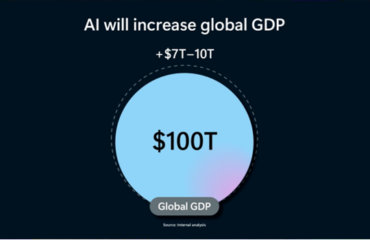
“Introduction to Google Analytics 4 for Internal Communications” explores the benefits, implementation tips, and challenges of integrating Google Analytics 4 (GA4) into internal communication strategies. GA4 is Google’s event-based analytics service that enables tracking and analysis of website and app traffic and engagement. The article highlights the reasons behind Google’s introduction of GA4, its advantages over Universal Analytics (UA), and its opportunities in tracking KPIs for the Internal Communication Department. It emphasizes the comprehensive data tracking, cross-platform visibility, and campaign performance tracking enabled by GA4. The article provides implementation tips, including pre-migration considerations and steps for setting up GA4. It also acknowledges challenges such as limited documentation, changes in tracking code, and limited third-party tool support. By harnessing the power of GA4, internal communicators can gain deep insights into employee engagement and optimize communication strategies accordingly.
Introduction
As internal communication professionals, measuring the effectiveness of our strategies is crucial to driving engagement and fostering a positive organizational culture. In today’s digital landscape, data-driven insights play a pivotal role in shaping our communication initiatives. With the introduction of Google Analytics 4 (GA4), we have an advanced event-based analytics tool that allows Internal Communications to track and analyze traffic and engagement across our websites and apps. In this article, we will explore the benefits, implementation tips, and challenges of integrating GA4 into internal communications.
Understanding GA4
GA4 revolutionizes the way we track user behavior and performance metrics. The events are categorized into: automatically collected, enhanced measurement, recommended, or custom events. Most events tracked in Universal Analytics (UA) fall under the automatically collected and enhanced measurement categories. However, if your organization relies on custom metrics, you may need to set up custom events to track them.
Why Google Made the Change
Google’s decision to introduce GA4 stems from changes in user behavior, privacy standards, and the need for more comprehensive analytics. GA4 uses first-party cookies and signals to improve user privacy while addressing the challenge of combining app and web data. It offers enhanced data collection methods and empowers businesses with advanced data analysis and visualization tools. If needed, it provides machine learning technology to identify trends and patterns and integration with Google Ads and Google Cloud enhances cross-platform data measurement.
Learn more about why Universal Analytics is going away here.
Unleashing the Power of GA4 for Internal Communications
Integrating GA4 into Internal Communications’ analytics offers a range of exciting opportunities to evaluate and optimize our strategies:
- Comprehensive Data Tracking: By embedding GA4 in collaboration with SharePoint analytics, Internal Communication can track crucial metrics such as page visits, time on page, new users, total users, and more. This integration enables a holistic view of employee engagement performance, helping Internal Communications to understand the effectiveness of current communication strategies.
- Cross-Platform Visibility: With GA4’s updated cross-device functionality, we can gain valuable insights into employee engagement across devices (PCs, phones, tablets) and channels (SharePoint and Microsoft Teams). This consolidated dashboard view provides comprehensive data across multiple platforms, giving us a clearer understanding of employee interactions and preferences.
- Campaign Performance Tracking: GA4 empowers its users to measure the effectiveness of our internal communication campaigns. By embedding UTM codes in our campaigns, we can track audience click-through rates and evaluate the impact of our initiatives. This data-driven approach allows its users to make informed decisions and optimize our campaigns for maximum engagement.
- Enhancing Audience Engagement: Understanding how our audience interacts with our content is crucial for keeping them engaged. By utilizing GA4’s scroll tracking feature, we can gain insights into how much of our content is being read. Armed with this information, we can adapt our strategies and create more captivating content that resonates with our audience.
Implementing GA4 – Tips
While the benefits of GA4 integration are substantial, there are some considerations to keep in mind:
- Pre-Migration Review: Before transitioning to GA4, thoroughly review your existing data. It’s important to note that old UA data cannot be imported into GA4. To ensure a smooth transition, leverage dual-tagging features to collect data on both GA4 and UA before July 1, 2023. Export relevant data and identify the key performance indicators (KPIs) you want to track with GA4.
- Setting Up GA4: Create a new GA4 Property and copy relevant details from your existing UA property, such as the property name, website URL, timezone, and currency settings. Activate enhanced measurement in your GA4 Property to capture additional data automatically. Establish a connection between your UA and GA4 properties to ensure data continuity. Update your website tracking code to start collecting data with GA4.
Current Challenges
Integrating Google Analytics 4 (GA4) into Internal Communications’ analytics offers significant benefits, but it also comes with its share of challenges. Explore the common challenges organizations may face and strategize with Ambient Studios to overcome them successfully.
- Limited Documentation and Resources: Due to GA4’s relatively new status, documentation and resources may be limited compared to Universal Analytics (UA). Overcome this challenge by leveraging available resources such as official documentation, online forums, and community support. Engaging with experts and attending industry events can also provide valuable insights.
- Changes in Tracking Code: Migrating from UA to GA4 requires updating the tracking code, which may necessitate adjustments for customized tracking setups. Conduct a thorough review, develop a migration plan, and collaborate with an external technical team like Ambient Studios to ensure a smooth transition.
- Limited Support for Third-Party Tools: GA4’s transition can result in compatibility issues with certain third-party tools. Explore GA4-compatible alternatives or consult with us to understand their GA4 integration plans. Work with analytics and IT teams to implement suitable workarounds or solutions.
- Changes in the Data Model: GA4 introduces a new data model that requires organizations to rethink their measurement strategy. Align the data model with organizational objectives, redefine metrics, and engage with stakeholders to tailor it to their reporting needs.
Conclusion
Integrating GA4 into Internal Communication strategies opens up a world of opportunities to measure, analyze, and optimize our initiatives effectively. By harnessing the power of GA4’s event-based tracking, cross-platform visibility, and advanced analytics tools, we can gain deep insights into employee engagement and refine our communication strategies accordingly. While challenges may arise during the implementation process, staying informed and leveraging available resources will help its users to unlock the full potential of GA4 and drive meaningful internal communication outcomes.
Contact Ambient Studios today to strategize your GA4 migration plan and unlock the full potential of Google Analytics 4 for Internal Communications. Harness the power of GA4 and transform your internal communications with data-driven insights.

In her early career, Irene Lee explored various fields of marketing at local start ups and organizations. Her experiences range from roles as a market researcher and social media intern to managerial level positions as a digital marketing project manager and event manager. When she is not daydreaming about her next dream destination, she enjoys experimenting and perfecting delicious pastries for her friends and families to enjoy, reading books, and attempting to learn a new language.



